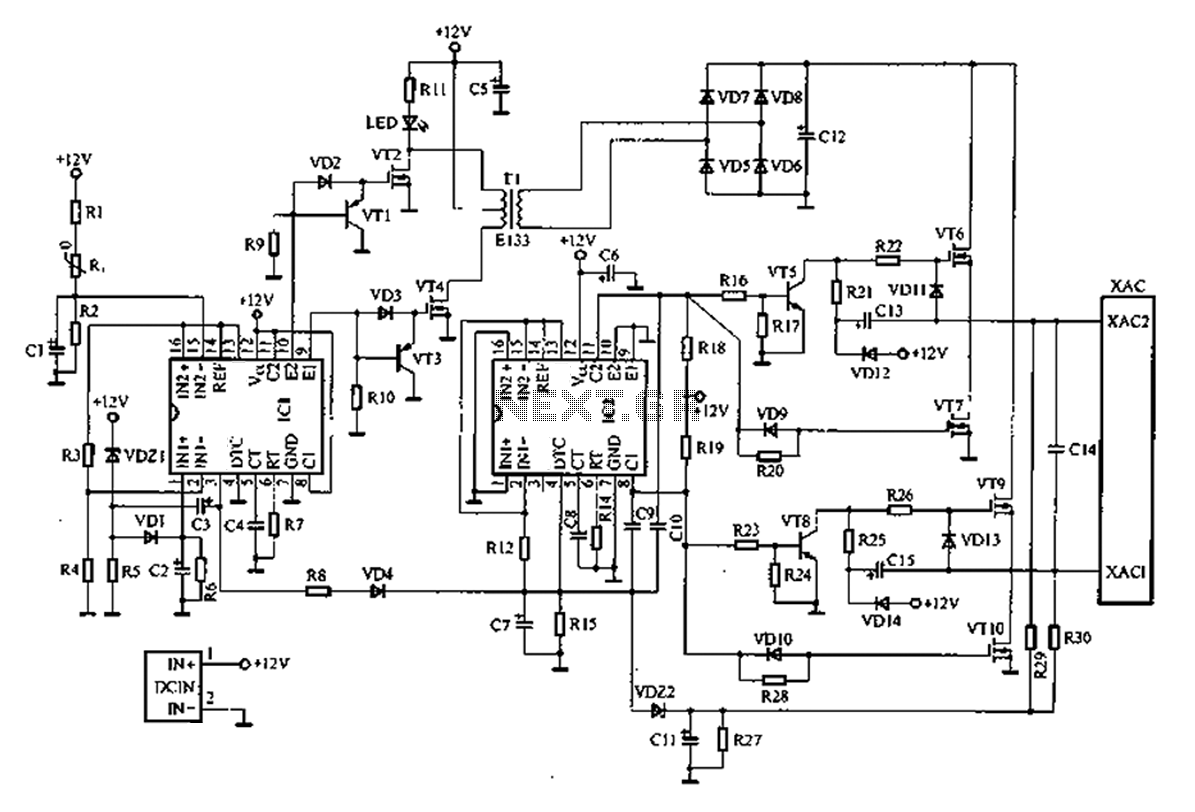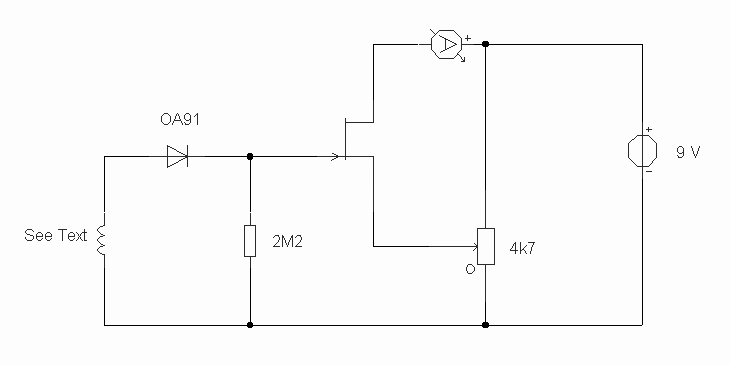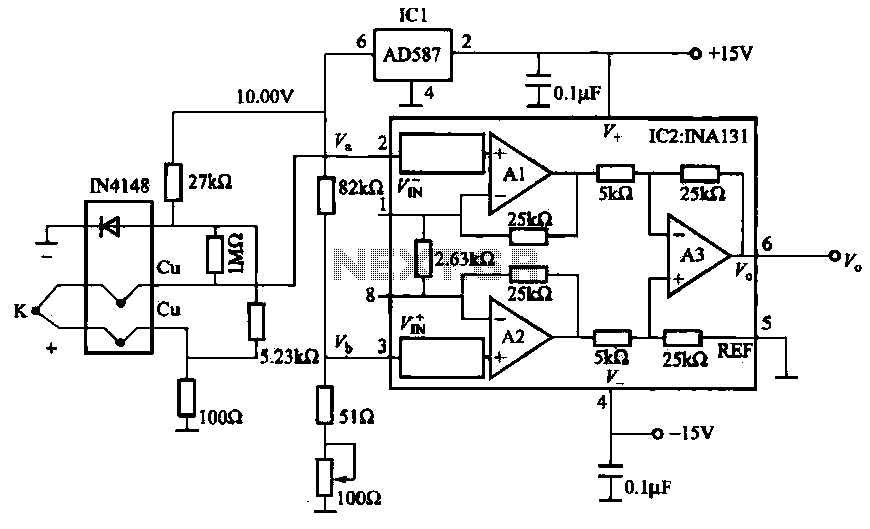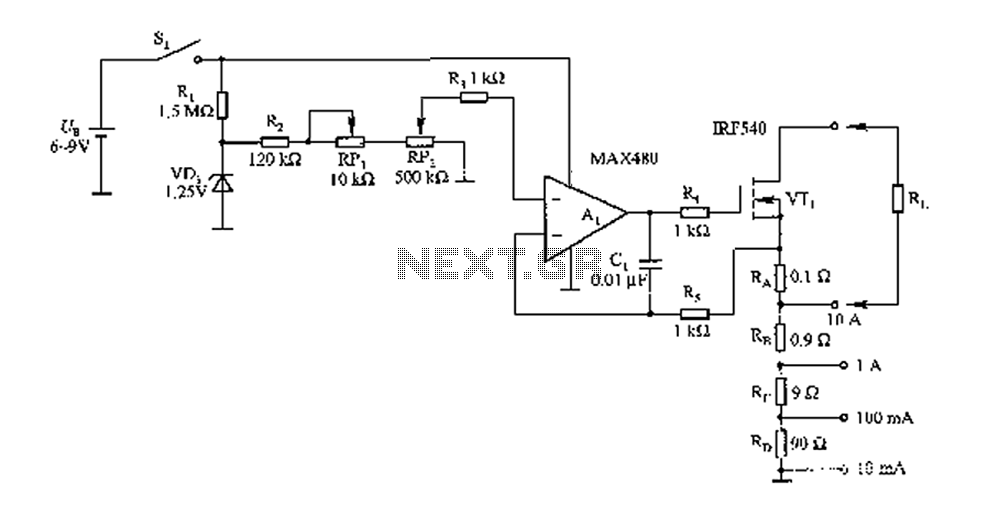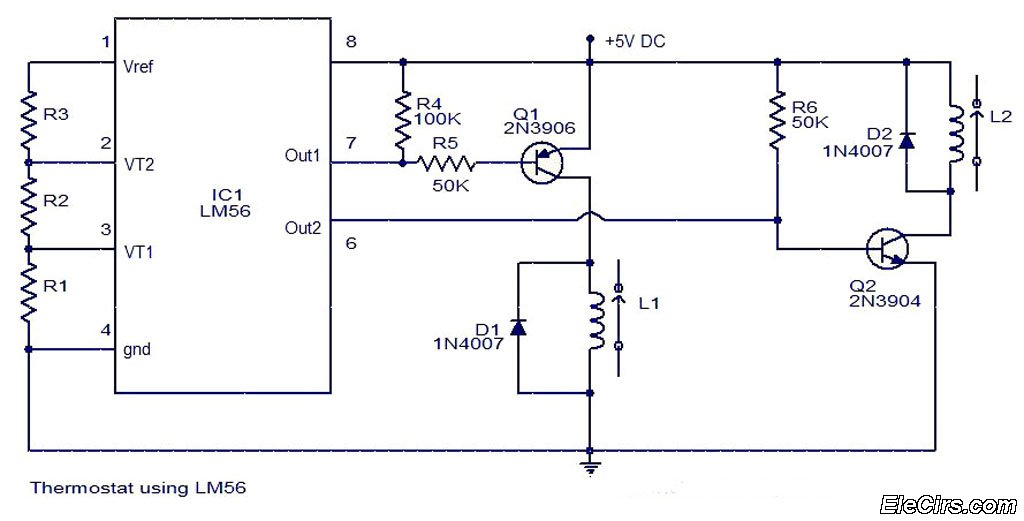
MC2833 radio transmitter Typical application circuit
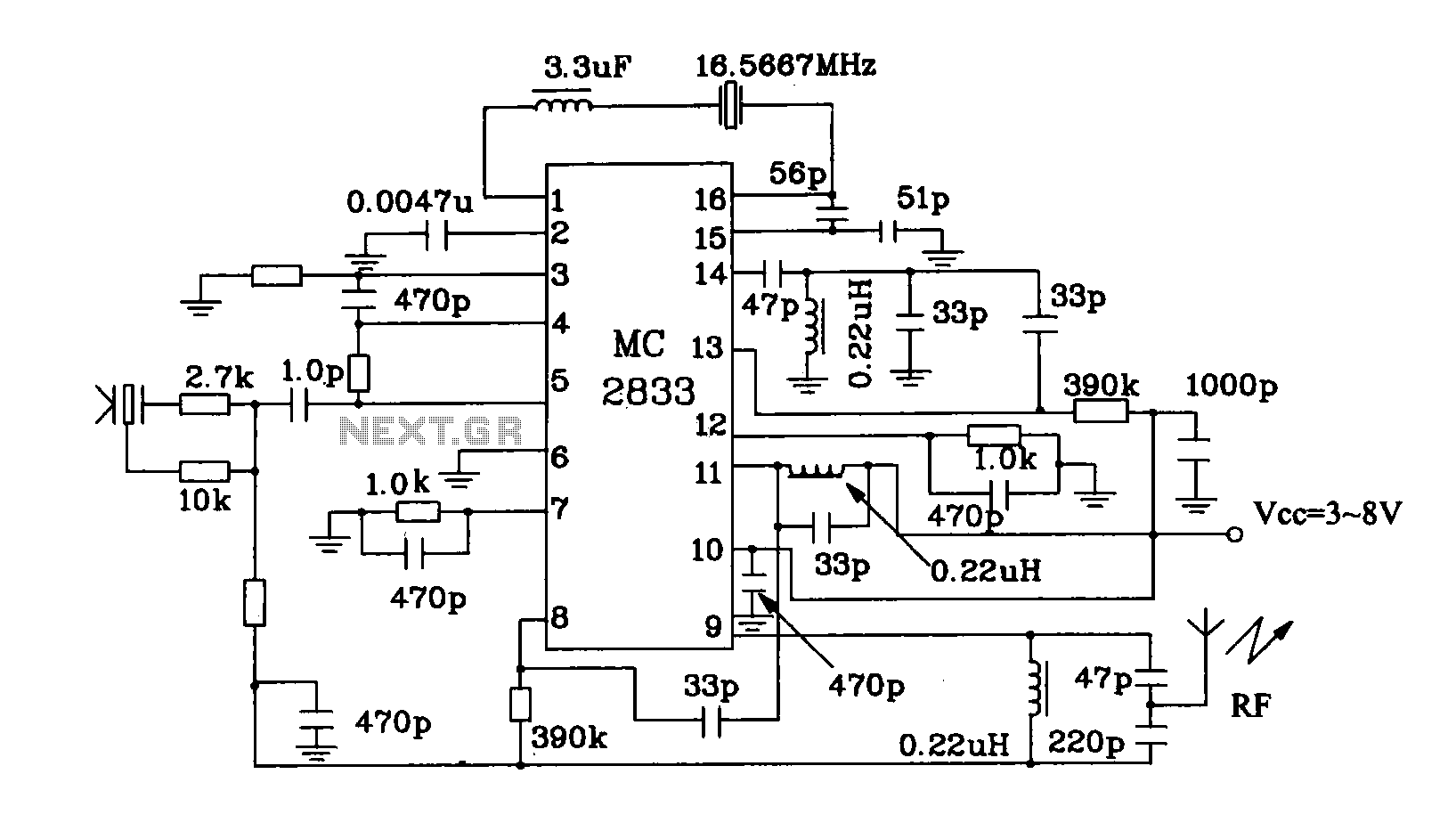
The MC2833 MC2831 radio transmitter dedicated circuit has been enhanced. This circuit is a typical application for radio transmitters, generating a high-frequency signal of 49.7 MHz that is transmitted through the antenna.
The MC2833 and MC2831 integrated circuits are designed for efficient radio frequency transmission applications. The circuit operates at a frequency of 49.7 MHz, which is suitable for various short-range communication tasks. The primary function of this circuit is to modulate audio signals onto a carrier wave, allowing for the transmission of information over radio waves.
The circuit typically includes an oscillator stage that generates the desired frequency, a modulator stage that combines the audio input with the carrier wave, and a power amplifier stage that boosts the signal strength for effective transmission. The antenna connected to the output of the power amplifier radiates the modulated signal into the surrounding environment.
In practical applications, the MC2833 and MC2831 circuits can be used in wireless microphones, remote controls, and other devices that require reliable radio communication. The design ensures minimal distortion and efficient power usage, which are critical for maintaining signal integrity and extending battery life in portable devices.
For optimal performance, careful consideration must be given to the layout of the circuit board, component selection, and tuning of the oscillator to achieve the desired frequency stability and output power. Additionally, proper shielding and grounding techniques should be implemented to minimize interference and enhance the overall performance of the transmitter circuit.MC2833 MC2831 radio transmitter dedicated circuit is improved.Radio transmitter typical application circuit this circuit generates a high frequency 49.7MHz signal transmitted by the antenna out.
The MC2833 and MC2831 integrated circuits are designed for efficient radio frequency transmission applications. The circuit operates at a frequency of 49.7 MHz, which is suitable for various short-range communication tasks. The primary function of this circuit is to modulate audio signals onto a carrier wave, allowing for the transmission of information over radio waves.
The circuit typically includes an oscillator stage that generates the desired frequency, a modulator stage that combines the audio input with the carrier wave, and a power amplifier stage that boosts the signal strength for effective transmission. The antenna connected to the output of the power amplifier radiates the modulated signal into the surrounding environment.
In practical applications, the MC2833 and MC2831 circuits can be used in wireless microphones, remote controls, and other devices that require reliable radio communication. The design ensures minimal distortion and efficient power usage, which are critical for maintaining signal integrity and extending battery life in portable devices.
For optimal performance, careful consideration must be given to the layout of the circuit board, component selection, and tuning of the oscillator to achieve the desired frequency stability and output power. Additionally, proper shielding and grounding techniques should be implemented to minimize interference and enhance the overall performance of the transmitter circuit.MC2833 MC2831 radio transmitter dedicated circuit is improved.Radio transmitter typical application circuit this circuit generates a high frequency 49.7MHz signal transmitted by the antenna out.
